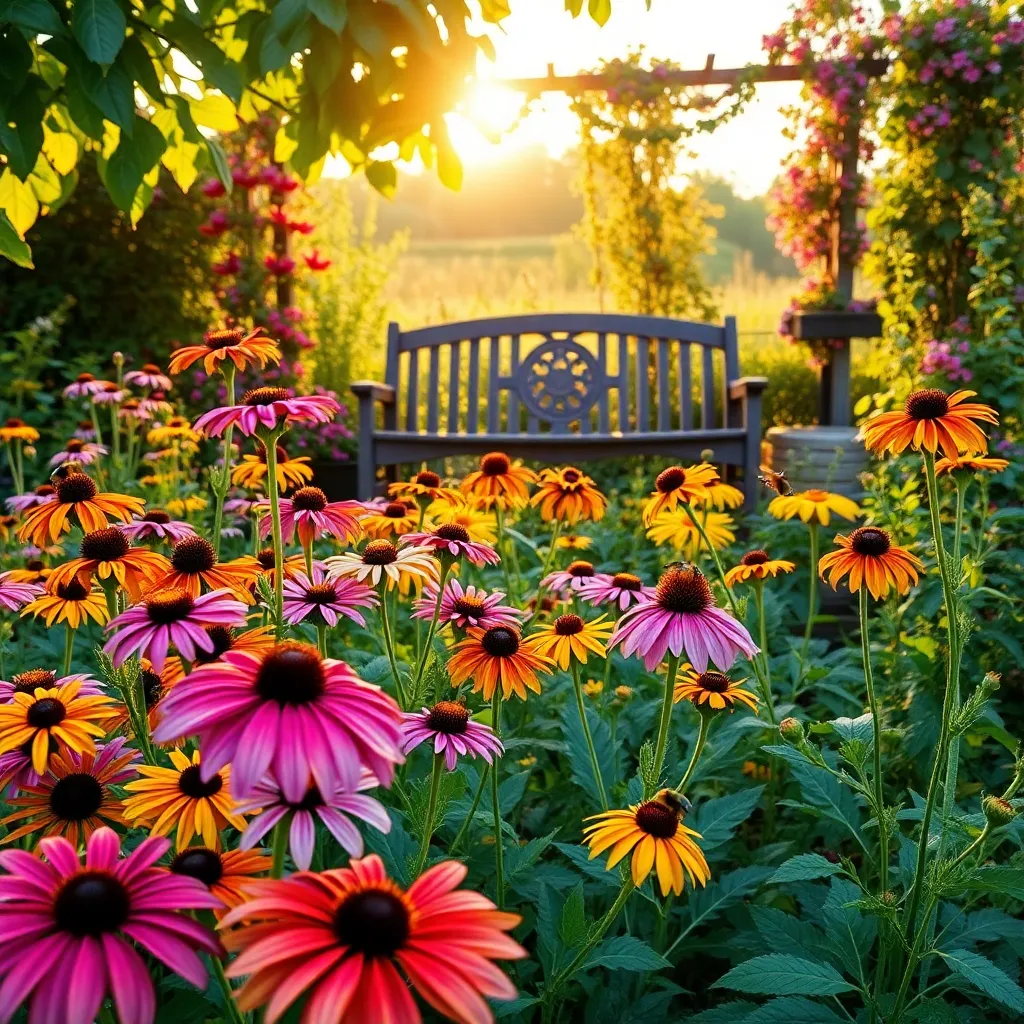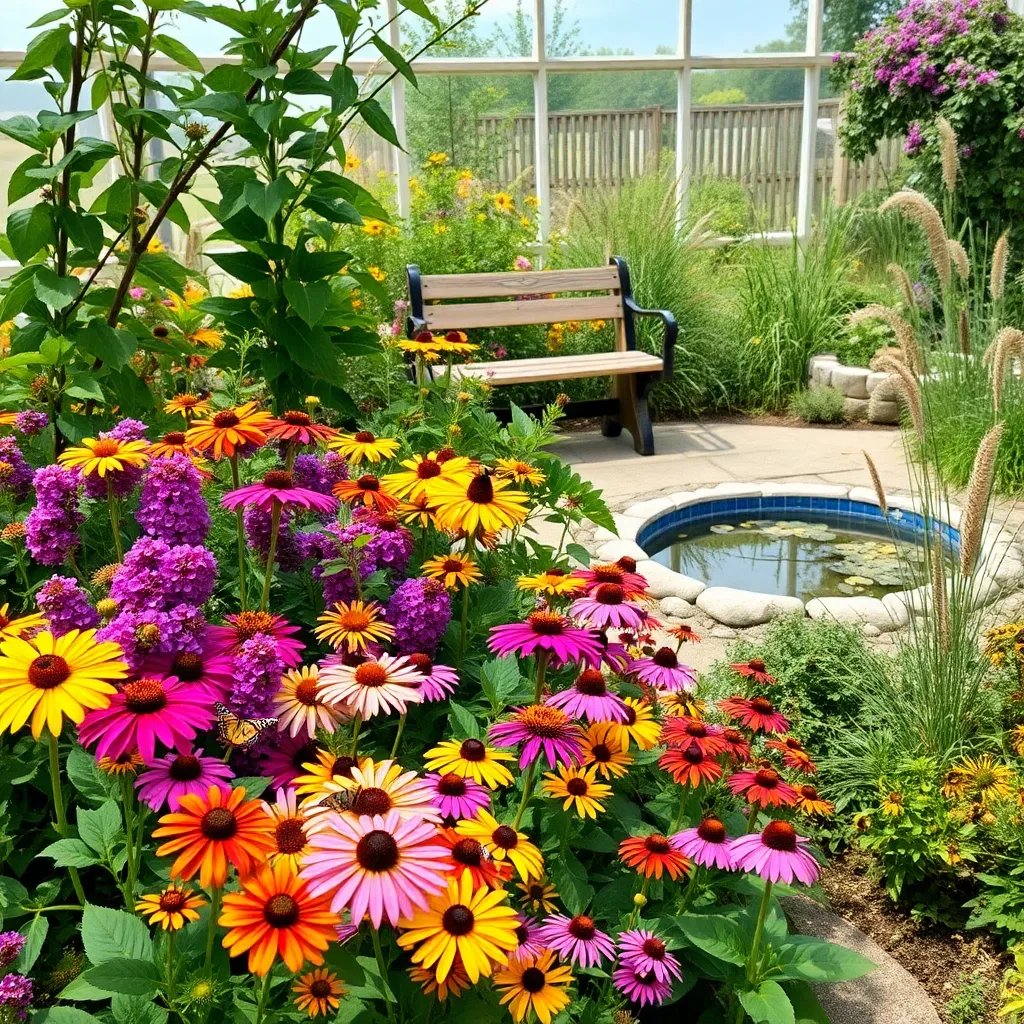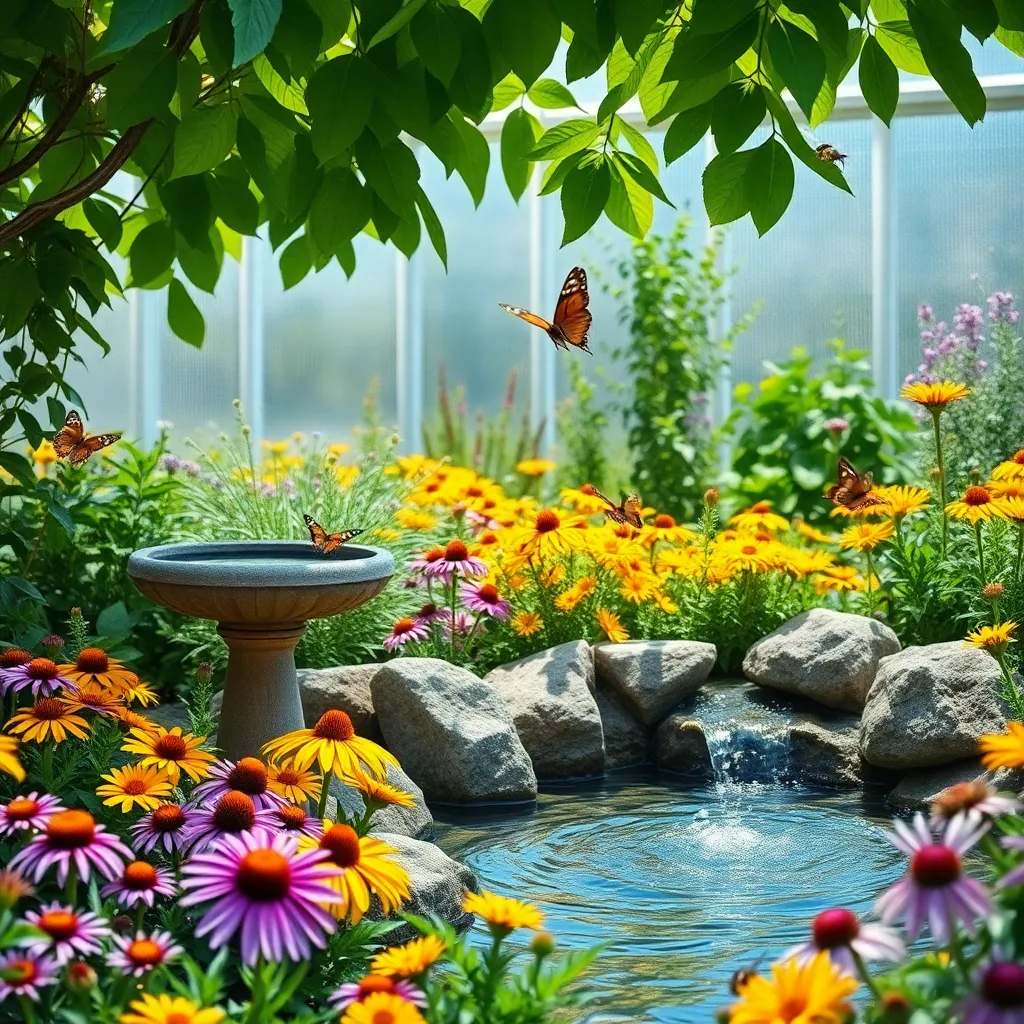Imagine your garden buzzing with life, a vibrant sanctuary where bees dance from bloom to bloom, butterflies flutter gracefully, and hummingbirds zip joyously. Creating a pollinator garden is not just an act of kindness towards these essential creatures; it’s a delightful way to infuse your outdoor space with charm and purpose. Whether you’re just getting your hands dirty for the first time or have been nurturing plants for years, this guide will help you cultivate a thriving haven that supports these vital pollinators.
Pollinators play a crucial role in the ecosystem, ensuring that many of the fruits, vegetables, and flowers we love continue to flourish. By planting a garden that welcomes them, you’re not only boosting biodiversity but also enhancing the beauty and productivity of your space. In the following sections, we’ll explore the best plant choices, design strategies, and maintenance tips that cater to both the needs of pollinators and your gardening goals. Get ready to transform your garden into a lively, buzzing paradise that benefits the environment and enriches your gardening experience.
Select Native Pollinator Plants

Choosing native pollinator plants is a great way to support local ecosystems and attract beneficial insects. Native plants are typically adapted to the local climate and soil conditions, making them easier to maintain with fewer resources.
Begin by researching which native plants thrive in your specific region and climate zone. You can usually find this information through your local cooperative extension service or native plant societies.
Consider planting a variety of species to create a rich tapestry of blooms throughout the growing season. This approach ensures that pollinators have a continuous supply of nectar and pollen.
Soil preparation is crucial for the success of your native plants. Most native plants prefer well-drained soil, so you might need to amend heavy clay soils with organic matter to improve drainage.
Watering needs will vary depending on the plant species and your local climate. Generally, established native plants need less watering than non-native species, but ensure they receive adequate moisture during their first growing season to establish strong roots.
For those looking for an advanced tip, try grouping plants with similar water and sunlight needs together. This technique, known as “hydrozoning,” can make your garden more efficient and easier to manage.
Design a Diverse Layout

Creating a diverse layout in your pollinator garden is essential to attract a wide range of beneficial insects. Aim to plant a variety of shapes, sizes, and colors to cater to different pollinators’ preferences and needs.
For beginners, consider starting with a mix of perennials and annuals to ensure continuous blooms throughout the growing season. Perennials like coneflowers and black-eyed Susans are sturdy and require minimal maintenance once established, while annuals such as zinnias add vibrant color and attract butterflies.
It’s crucial to organize your plants by their sunlight and water requirements. Group sun-loving plants like lavender and bee balm in sunny areas, and place moisture-loving species such as joe-pye weed in more shaded, damp spots to ensure optimal growth.
Advanced gardeners might experiment with layering techniques to create depth and visual interest. Incorporate ground covers like creeping thyme to fill in gaps and attract smaller pollinators, and use taller plants like sunflowers at the back to provide structure and shelter.
Consider using native grasses and shrubs to add texture and provide habitats for pollinators throughout the year. Grasses like switchgrass and little bluestem not only offer nesting materials but also create movement in the garden, which can lure more insects.
Prepare Rich, Well-Drained Soil

Creating rich, well-drained soil is crucial for a thriving pollinator garden. Start by assessing your existing soil to determine its texture and drainage capabilities, as both play a pivotal role in plant health.
For gardeners with heavy clay soil, adding organic matter like compost or well-rotted manure can significantly improve drainage and nutrient content. Work these materials into the top 6-12 inches of soil to enhance structure and fertility.
Sandy soils, although well-drained, often lack nutrients and can dry out quickly. To combat this, incorporate organic matter and consider using a water-retaining soil amendment such as coconut coir or peat moss to improve moisture retention.
Experienced gardeners might opt to test their soil’s pH to ensure it falls within the ideal range of 6.0 to 7.5 for most pollinator-friendly plants. Adjusting pH can be done naturally by adding lime to raise it or sulfur to lower it, depending on your needs.
Incorporate Water Sources Effectively

To attract a diverse range of pollinators, incorporating water sources in your garden is crucial. Water provides hydration and a habitat for various pollinator species, enhancing your garden’s biodiversity.
Consider adding a shallow birdbath or a small pond to your garden area. Ensure the water source is accessible by placing stones or sticks that allow insects to land safely.
Regularly maintain your water sources to keep them clean and inviting for pollinators. Change the water frequently to prevent stagnation and deter mosquito breeding.
Advanced gardeners might explore creating a rain garden, which naturally collects and filters rainwater. This not only supports pollinators but also improves your garden’s water management by reducing runoff.
Maintain with Eco-Friendly Practices

Maintaining a pollinator garden with eco-friendly practices not only supports the environment but also ensures the health and vitality of your plants. Start by using organic fertilizers, which improve soil structure and provide essential nutrients without the harmful chemicals found in synthetic options.
Consider leaving some areas of your garden undisturbed to provide natural habitats for pollinators. By allowing native plants to flourish, you’ll attract a diverse range of pollinators while reducing the need for intensive garden maintenance.
Water your garden efficiently by implementing a drip irrigation system. This method delivers water directly to the root zones, minimizing evaporation and runoff, which is especially beneficial in arid regions.
Mulching is another eco-friendly practice that conserves moisture and suppresses weeds. Use organic materials like wood chips or straw, which decompose over time and enrich the soil with organic matter.
Additionally, practice companion planting to naturally deter pests and improve pollination. Plants like marigolds and nasturtiums can repel insects, while others, such as borage and lavender, attract beneficial insects to your garden.
Conclusion: Growing Success with These Plants
In creating a thriving pollinator garden, we’ve explored five vital relationship concepts: understanding the needs of your garden’s inhabitants, fostering a diverse environment, maintaining consistent care, being patient with growth, and embracing adaptability. Just as these principles nurture a flourishing garden, they can also cultivate thriving personal relationships. To take immediate action, identify one small change you can apply today—whether it’s planting a new species or spending a few extra moments tending to your garden’s needs.
Remember, just like in relationships, small, consistent efforts yield the most beautiful results over time. Bookmark this article to serve as your handy guide whenever you need a refresher or inspiration. As you nurture your garden, envision the blossoming of your personal connections, where each act of care strengthens the foundation of your relationships.
Stay committed to growth, both in your garden and your relationships, and watch as they both flourish. Embrace this journey with enthusiasm, knowing that the seeds you plant today will bring joy and harmony tomorrow. Let this article be your anchor, and revisit it whenever you need a reminder of the power of nurturing relationships.
